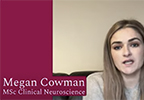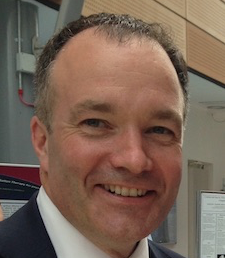-
Courses

Courses
Choosing a course is one of the most important decisions you'll ever make! View our courses and see what our students and lecturers have to say about the courses you are interested in at the links below.
-
University Life

University Life
Each year more than 4,000 choose University of Galway as their University of choice. Find out what life at University of Galway is all about here.
-
About University of Galway

About University of Galway
Since 1845, University of Galway has been sharing the highest quality teaching and research with Ireland and the world. Find out what makes our University so special – from our distinguished history to the latest news and campus developments.
-
Colleges & Schools

Colleges & Schools
University of Galway has earned international recognition as a research-led university with a commitment to top quality teaching across a range of key areas of expertise.
-
Research & Innovation

Research & Innovation
University of Galway’s vibrant research community take on some of the most pressing challenges of our times.
-
Business & Industry

Guiding Breakthrough Research at University of Galway
We explore and facilitate commercial opportunities for the research community at University of Galway, as well as facilitating industry partnership.
-
Alumni & Friends

Alumni & Friends
There are 128,000 University of Galway alumni worldwide. Stay connected to your alumni community! Join our social networks and update your details online.
-
Community Engagement

Community Engagement
At University of Galway, we believe that the best learning takes place when you apply what you learn in a real world context. That's why many of our courses include work placements or community projects.
Clinical Neuroscience (MSc)
Course Overview
Dr Ciara Egan provides further details about the Clinical Neuroscience course as part of this video covering all School of Psychology MSc programmes.
Knowledge derived from neuroscience research in mental health, psychology, neurodevelopment and neurodegeneration is revolutionising how we think about and treat mental disorders. A thorough grounding in neuroscience is fast becoming an essential step for a career in academic and clinical psychology, psychiatry, and careers in neuroscience more broadly.
In response to that need this program is designed for students with backgrounds in psychology, medicine, pharmacology, and other biomedical and neuroscience related disciplines. It will equip students with a set of core skills in the field of clinical neuroscience including in-depth understanding of neuroanatomy, neuroimaging, and neuropsychiatry. Students will have opportunities to learn through practical hands-on experience.
Scholarships available
Find out about our Postgraduate Scholarships here.
Applications and Selections
Applications are made online via the University of Galway Postgraduate Applications System.
Who Teaches this Course
The course will be delivered by internationally recognised researchers and clinicians from University of Galway’s newly established Neuroimaging and Cognitive Genomics Center (NICOG) and the NCBES Galway Neuroscience Center (GNC), giving students access to rich and diverse expertise in neuroanatomy, cognitive neuroscience, psychiatry, neurology, pharmacology & human genetics. In addition to the below, every year we have a number of classes taught by adjunct and visiting lecturers.
- Dr Tom Burke (part-time)
- Prof John Kelly
- Dr Pilib Ó Broin
- Dr Andrew Flaus
- Dr Miriam Moriarty
- Dr Jane Conway

School of Psychology
University of Galway
View Profile
Requirements and Assessment
Key Facts
Entry Requirements
Second Class Honours NQAI Level 8 degree or equivalent in a discipline relating to neuroscience. Qualifying degrees include, but are not limited to, psychology, medicine, pharmacology and biomedical science.
Additional Requirements
Recognition of Prior Learning (RPL)
Duration
1 year, full-time
Next start date
September 2024
A Level Grades ()
Average intake
18
QQI/FET FETAC Entry Routes
Closing Date
No set closing date. Offers are made on a continuous basis.
NFQ level
Mode of study
ECTS weighting
90
Award
MSc
CAO
Course code
MSC-CNS
Course Outline
The course will be of a content and format consistent with highest standards for postgraduate courses, consisting of 90 ECTS credits obtained by completion of course modules. Teaching approaches will consist of didactic lectures, problem-based learning, seminars, workshops, journal clubs, practicals and completion of a research dissertation, as well as subject specific training in a range of areas relevant to clinical neuroscience. Students will also receive valuable training in current research methodologies, being facilitated to study in-depth those methodologies most interesting to them (e.g. systematic review methodologies, wet-bench methodologies, software methodologies, etc.).
Modules include:
- Neuroanatomy
- Neurophysiology
- Medical Genomics
- Fundamental & Applied Concepts in Pharmacology
- Introduction to Molecular and Cellular Biology
- Neuropsychology
- Clinical & Experimental Cognitive Neuroscience
- Human Neuroimaging
- Neuropsychiatry & Mental Health
- Applied Statistics
- Research Methods in Cognitive Neuroscience
Curriculum Information
Curriculum information relates to the current academic year (in most cases).Course and module offerings and details may be subject to change.
Glossary of Terms
- Credits
- You must earn a defined number of credits (aka ECTS) to complete each year of your course. You do this by taking all of its required modules as well as the correct number of optional modules to obtain that year's total number of credits.
- Module
- An examinable portion of a subject or course, for which you attend lectures and/or tutorials and carry out assignments. E.g. Algebra and Calculus could be modules within the subject Mathematics. Each module has a unique module code eg. MA140.
- Subject
- Some courses allow you to choose subjects, where related modules are grouped together. Subjects have their own required number of credits, so you must take all that subject's required modules and may also need to obtain the remainder of the subject's total credits by choosing from its available optional modules.
- Optional
- A module you may choose to study.
- Required
- A module that you must study if you choose this course (or subject).
- Required Core Subject
- A subject you must study because it's integral to that course.
- Semester
- Most courses have 2 semesters (aka terms) per year, so a three-year course will have six semesters in total. For clarity, this page will refer to the first semester of year 2 as 'Semester 3'.
Year 1 (90 Credits)
Optional SI209: Neurophysiology - 5 Credits - Semester 1Optional ST311: Applied Statistics I - 5 Credits - Semester 1
Optional PS340: Neuropsychology - 5 Credits - Semester 1
Optional AN326: Neuroanatomy - 5 Credits - Semester 1
Optional BI5101: Molecular biology for quantitative scientists - 5 Credits - Semester 1
Optional MA5106: Medical Genomics 1 - 5 Credits - Semester 1
Optional PM209: Applied Concepts in Pharmacology - 5 Credits - Semester 1
Optional PM208: Fundamental Concepts in Pharmacology - 5 Credits - Semester 1
Optional BI5107: Introduction to Molecular and Cellular Biology - 5 Credits - Semester 1
Optional PS6183: Advanced Research Methods - 10 Credits - Semester 1
Required PS6130: Clinical and Experimental Cognitive Neuroscience - 5 Credits - Semester 1
Required PS6132: Dissertation - 30 Credits - Semester 1
Optional RPL015: Recognised Prior Learning - 15 Credits - Semester 1
Optional RPL010: Recognised Prior Learning - 10 Credits - Semester 1
Optional RPL005: Recognised Prior Learning - 5 Credits - Semester 1
Optional PS6157: Research Methods in Neuroscience - 10 Credits - Semester 2
Optional PS3122: Cognitive Psychology - 5 Credits - Semester 2
Required AN5105: Human Neuroimaging - 10 Credits - Semester 2
Required PS6133: Neuropsychiatry and Mental Health - 10 Credits - Semester 2
Optional PS320: Memory & Cognition - 5 Credits - Semester 2
Optional AN4104: Clinical Neuroimaging & Radiological Anatomy - 5 Credits - Semester 2
Optional PS6131: Research Methods in Neuroscience - 15 Credits - Semester 2
Why Choose This Course?
Career Opportunities
Graduates of this programme are likely to go on to professional training in clinical psychology, psychiatry and neuroscience-related posts in industry or to undertake further academic work at PhD level.
Who’s Suited to This Course
Learning Outcomes
Transferable Skills Employers Value
On the successful completion of this programme students will have:
- Enhanced skills in research and experimental design
- A high level of written and verbal communication
- Data management, analysis, and statistics skills
- Oral and scientific poster presentation skills
- The ability to critically evaluate published information
- Ability to work independently and in collaboration with others
Work Placement
Study Abroad
Related Student Organisations
Course Fees
Fees: EU
Fees: Tuition
Fees: Student levy
Fees: Non EU
Postgraduate students in receipt of a SUSI grant—please note an F4 grant is where SUSI will pay €4,000 towards your tuition (2024/25). You will be liable for the remainder of the total fee. A P1 grant is where SUSI will pay tuition up to a maximum of €6,270. SUSI will not cover the student levy of €140.
Postgraduate fee breakdown = Tuition (EU or NON EU) + Student levy as outlined above.
Note to non-EU students: learn about the 24-month Stayback Visa here.
Find out More
Course Director: Professor Gary Donohoe
Course Coordinator:
Dr Ciara Egan
T: +353 91 493 457
E: ciara.egan@universityofgalway.ie
What Our Graduates Say

Liam McGrattan | Assistant Psychologist
Having come from a Psychology background, the Master of Clinical Neuroscience provided a perfect balance between biological and psychological content, which I sought to learn about. The modules in this course included the likes of neuroanatomy, pharmacology, neurophysiology and neuropsychiatry, which did a brilliant job of describing the interrelationship between our minds and bodies. The small course size provides the opportunity to develop genuine connections with people from different backgrounds. I aspire to do the Doctorate in Clinical Psychology when I am ready. This course assisted me in making the next step in my learning and landing an Assistant Psychologist Position. The opportunity to publish one's dissertation and explore future research also allows one to pursue a career in research.in Connect with Liam

Emma Corley | PhD candidate
After completing the MSc in Clinical Neuroscience, I was eager to carry on conducting research and I was fortunate enough to be offered a PhD in the school of psychology. The MSc course completely prepared me for the start of my PhD. I learned core skills such as experimental design and data analysis, which have been invaluable in my further education. The lecturing staff were extremely helpful, enthusiastic and supportive, giving me lots of guidance on improving my prospects for going on to a professional doctoral program. During the MSc, I found that not only did I benefit from the interdisciplinary focus of the modules, but I also benefitted greatly from being surrounded by students from different academic backgrounds such as psychology, biochemistry, pharmacology and anatomy. This often made for interesting discussions in class and in group work. I would highly recommend this course to anyone wishing to pursue a career in academia or in clinical psychology. The course is taught to a really high standard and covers a wide variety of topics in the area of clinical neuroscience.in Connect with Emma

Evan Hunt | Trainee Clinical Psychologist
After completing the MSc in Clinical Neuroscience I worked as an Assistant Psychologist in the HSE in a variety of settings, including Primary Care Psychology and Adult Mental Health before starting clinical training. The MSc equipped me with a wide knowledge base that directly impacts my practice: from explaining the underlying physiological aspects of anxiety disorders in psychoeducational sessions, to conducting neuropsychological and cognitive assessments. The concepts and practices that I learned have aided me in treating clients, allowing me to draw on the insights of expert clinicians and practical discussions, particularly from the neuropsychiatry and mental health module.in Connect with Evan
2023 QS Subject Rankings: Top 300























